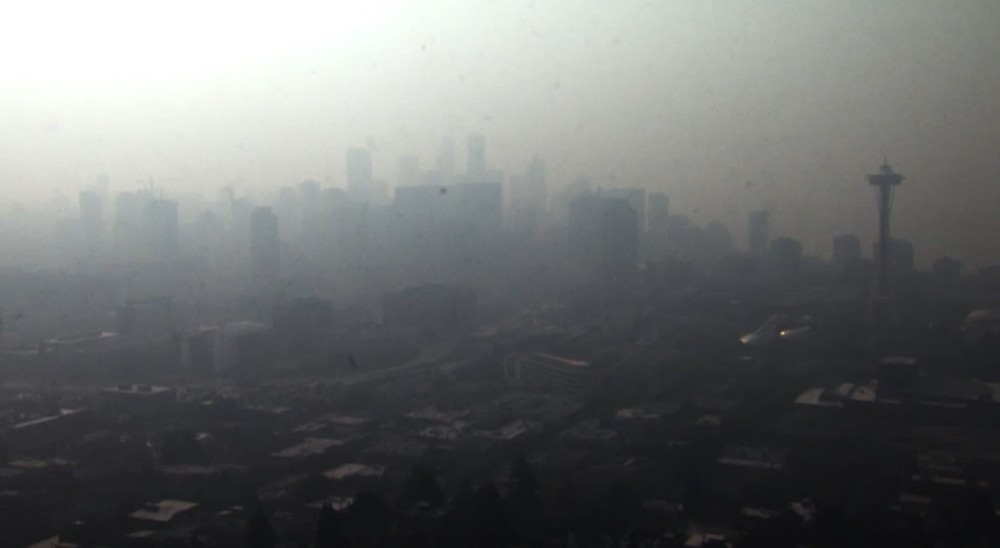When smoke from forest fires in Quebec and Nova Scotia blotted out landmarks hundreds of miles away in the United States, and caused such hazardous air quality that schools were canceled, Fox News had a predictable response: Nothing to see here.
“I haven’t seen this much smoke since that homeless guy burned down our Christmas tree,” Tweeted Jesse Watters, who joked: “Canada dropped a smoke bomb on us.” Temperamental weekend Fox host Mark Levin delivered a Trump-style spin to the news: “The smoke coming from Canada isn’t from climate change; it’s the incompetent ruling-class ideologues who don’t know how to manage forests.”
The reality, however, is that smoke gives a clear sign of perils posed by climate change. A drier, hotter planet is burning — from the taiga of Siberia to equatorial forests of Borneo and the Amazon Basin. Drought and heatwave fires have burned through vast swaths of Australia. A 2018 firestorm destroyed the town of Paradise, California, killing 85 people, burning 18,000 structures, and doing billions of dollars in damage. Such are the fire risks in the Golden State that State Farm recently announced it will stop accepting homeowner insurance applications.
Smoke drifting off fires from British Columbia – “the new normal” in words of B.C.’s then-Premier John Horgan – caused Seattle to have the planet’s worst air quality a few summers back. Philadelphia and Allentown, Pennsylvania, had the same unwelcome distinction earlier this month. Seemingly, no place is immune from drought and fire and smoke. A persistent fire blazed in the rain forest of the Olympic Peninsula’s Queets River during the summer of 2015.
Not to worry, argued former Trump EPA transition adviser Steve Milloy as a guest on Fox News: “There’s just no health risk. We have that kind of air in India and China all the time . . . no public health emergency . . . this doesn’t make anybody cough. This is not a health event.”
Milloy is, of course, wrong. Wildfire smoke contains carbon monoxide, nitrogen oxide, ozone, and particulate matter – pollutants linked to respiratory and cardiovascular illness. The healthy person, inhaling smoky air, may feel irritation to the eyes, or trouble recovering breath after a cough. People with respiratory problems are very much in danger of a “health event.”
We are breathing more smoke, and more often. In words of Keith Bein, a University of California-Davis atmospheric scientist: “People were once exposed once or twice in a lifetime. Now, it’s happening every summer and for longer.” The summer of 2023 has not officially arrived. Yet, smoke from wildfires in Alberta has already blanketed much of Canada. Smoke from Quebec has caused the Washington Monument to visibly vanish.
A 2018 study in the Journal of the American Heart Association found that smoke from the wildfires of 2015, which covered 893,000 acres in California, created cardiovascular issues and problems with blood flow to the brain in 361,087 emergency department visits between May 1 and September 30.
Climate change is a fire starter. In western North America, we’ve witnessed an earlier melt of winter snows, an extended fire season, higher temperatures, and prolonged drought. The result — bigger and hotter fires. The 256,000-acre Carlton Complex Fire struck north-central Washington in the summer of 2014. Two years ago, a day after experiencing the highest temperature ever recorded in Canada, the town of Lytton, British Columbia, was consumed by a fire that killed two people.
In turn, fires help fuel climate change, striking at the lungs of our planet. “When a fire burns, carbon storage is diminished and carbon dioxide is released, adding to the concentration of greenhouse gases that are warming the Earth’s atmosphere,” explained a recent Politico article, coauthored by Dr. Jerry Franklin from the University of Washington.
Our political leaders fiddle while the planet burns. A U.S. Supreme Court ruling blocked the EPA from using the Clean Air Act to regulate coal-fired power plants, which are America’s largest source of carbon emissions. The Republican-run U.S. House of Representatives pushed through an energy package designed to sharply increase production of coal, oil, and natural gas on public lands.
At the state level, Texas lawmakers voted a bill saying the state will not do business with banks and investment firms that divest from the carbon economy. The new law would withhold state retirement and investment money from institutions found by the state comptroller to be “boycotting” fossil fuels. Similarly, state treasurers of 15 states have put the financial industry “on notice” to not dare divest.
The danger of playing with fire, a familiar lesson learned by children, seems to have escaped policy-making adults and network executives. Fox News dwells on the threat posed by letting transgender teenagers use their rest room of choice or participate in women’s athletic competition. Ignored is a much greater danger. The combination of extreme heat, drought, and weather extremes is making life perilous in parts of the Earth. Climate-driven migration has arrived — witness the Mediterranean. In words of a recent ProPublica essay, “Climate change is remapping where humans can exist on the planet.”
Our corner of the planet is known for its temperate summers. A few summers ago, however, I boarded a Seattle-bound plane in sunny Atlanta. An hour from arrival, smoke completely obscured Northwest landmarks. Only the summit of Mt. Rainier rose above the blanket. The smoke was equally thick a year later, every mile of a drive from Seattle to Canmore, Alberta.
It may seem cute to quip about a “smoke bomb.” What we’re witnessing, on all continents, is no joke. Smoke is getting into our eyes, but should also be on our minds.

One of Milloy’s previous jobs was professional liar for the tobacco industry.